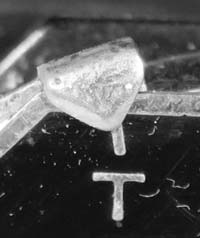Using 'Time' Mode on Vintage Film Cameras
Time Mode for Artificial Light

Don't let complex metering issues get in the way of enjoying your vintage cameras. An exposure meter may not always be available, and using a meter to determine exposure for some scenes with unusual lighting distribution may be difficult. But there are methods of estimating exposure values without the use of an exposure meter. The 'Sunny 16’ rule is a method of estimating correct daylight exposures without a light meter. But what about at night when artificial light is being used?
Vintage cameras prior to 1950 for example, do not have a good range of aperture values to choose from. They are often limited to the range f/8 to f/45. To take images in artificial light, you will need to set your vintage camera to 'Time' mode. The shutter is then opened for a period of time ranging from as low as 1 second to a timed exposure of several minutes or even hours.
For many scenes using artificial lighting, the light level is predictable so that exposure can often be determined, with reasonable accuracy, from tabulated values. The tabulated exposure values work well for negative film which has a lot of latitude, but not so well for colour slide film where more accurate exposure is desirable.
The Calculator
Using the calculator shown below, you can find the estimated time required for an exposure under different lighting conditions. The calculator will take into account the ISO of the film, the f number of the aperture and the type of film being used. The type of film being used is important because long exposures cause the normal reciprocity between aperture and shutter speed to break down. Different films respond differently to long exposures. An ideal film would have no reciprocity failure and the time given by a lightmeter would hold for long time exposures. This is the case for digital cameras. Find out more about reciprocity failure.
This calculator have been designed with vintage cameras in mind. The aperture settings are what you might find on these old cameras. Negative film is very forgiving and can be overexposed by 2 stops without much effect on the final image. Always err on the side of overexposure. If the f stop of your camera is not shown in the dropdown menu, overexpose by choosing a smaller aperture (larger f number) in the calculator. This will have the effect of giving a longer time for exposure and would therefore slightly overexpose.
I have assumed that the quickest time exposure to be made with these cameras with any accuracy is one second. Exposure times of less than 1 second are shown as 'out of range'.
'Ideal Film 100' gives the time required for ISO 100 film with no reciprocity failure.